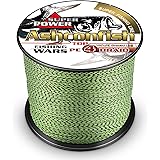Have you ever wondered what it truly takes to thrive in an isolated, natural environment, relying solely on nature’s bounty and your own ingenuity? The accompanying video offers a mesmerizing glimpse into a world of ultimate self-reliance, showcasing a journey of wilderness survival where foraging, fishing, and rustic cooking become daily rhythms. This immersive experience, devoid of dialogue, speaks volumes through the meticulous actions of one individual navigating the dense forest and tranquil waters with quiet competence.
Observing the detailed footage, we witness a masterclass in adapting to the wild, transforming its elements into sustenance and shelter. This blog post delves deeper into the practical skills and profound mindset necessary for such an existence, expanding on the visual narrative of this incredible display of off-grid living and primitive skills. It highlights the core components of genuine wilderness self-sufficiency, from identifying edible plants to preparing nourishing meals over an open fire.
Navigating the Wild: The Journey Through Nature
The journey begins with silent trekking through a lush, verdant forest, a true testament to the constant movement inherent in wilderness survival. A man, accompanied by his loyal dog, traverses rocky stream beds and steep inclines, demonstrating an intimate knowledge of the terrain. This relentless exploration is not merely travel; it signifies an active search for resources and a deeper connection with the natural world surrounding him.
Every step in this environment involves keen observation and careful planning for survival in remote locations. The intricate network of streams and waterfalls, though beautiful, also presents navigational challenges that require thoughtful engagement. Mastering such navigation skills remains crucial for any serious adventurer or aspiring off-grid enthusiast.
Foraging for Sustenance: Nature’s Pantry
One of the most vital aspects of remote living involves harnessing the abundant resources of the forest. The video expertly illustrates the art of foraging, with the man carefully collecting green, oval-shaped fruits and various green leaves from the forest floor and branches. This practice underscores a deep understanding of edible plants, a cornerstone skill for any bushcraft practitioner.
However, successful foraging extends far beyond simply picking what looks appealing. It demands precise identification and an awareness of sustainable harvesting practices to protect local ecosystems. Many wild edibles offer significant nutritional value, yet misidentification can lead to severe health consequences, emphasizing the importance of expert guidance or extensive research before consuming unknown plants.
Identifying Wild Edibles
Identifying safe wild edibles is an essential skill for sustainable wilderness survival, demanding patience and education. While the video shows the man confidently gathering green leaves and fruits, a beginner must exercise extreme caution. Consulting reliable field guides specific to your region is paramount before consuming any wild plant material.
Always remember the universal rule of “when in doubt, leave it out” when encountering unfamiliar flora. Learning about common edible wild fruits like berries, nuts, and various greens can provide a solid foundation for any aspiring forager. Additionally, understanding toxic look-alikes helps prevent accidental poisoning, ensuring your safety in the wild.
Sustainable Foraging Practices
Sustainable foraging ensures the long-term health of the ecosystem and the continued availability of natural food sources. The careful way the man collects his harvest suggests an adherence to these crucial principles. Never over-harvest from a single area, always leaving plenty for wildlife and for the plant to regenerate itself for future growth.
Only take what you need and minimize your impact on the surrounding environment during your foraging endeavors. This respectful approach maintains the delicate balance of nature, allowing others to benefit from the same resources in the future. Ethical wild harvesting forms a fundamental pillar of responsible bushcraft and off-grid living.
Mastering the Waters: Rustic Fishing Techniques
The transition from forest to water brings forth another critical wilderness survival skill: fishing. The man skillfully uses a boat, employing both a long stick for propulsion and traditional line fishing techniques. He successfully reels in multiple fish, eventually even catching them with his bare hands, showcasing impressive adaptability and patience.
Fishing in a remote lake provides a crucial protein source, diversifying the diet beyond foraged plants. This activity not only yields sustenance but also connects the individual deeply with the aquatic environment, highlighting nature’s generous provision. Such hands-on fishing experiences offer invaluable lessons in resourcefulness and understanding local fish behaviors.
Primitive Fishing Strategies
Beyond modern rods and reels, primitive fishing strategies are incredibly effective for wilderness survival. The man in the video primarily uses a simple hook and line, demonstrating its enduring efficiency. However, many cultures have developed diverse methods, including hand-lining, spear fishing, and constructing basic traps or weirs.
Bait selection proves critical for success, with the man using the same green fruits he foraged earlier as effective bait. Observing fish behavior, understanding their preferred habitats, and employing stealth are all vital components of successful primitive fishing. These time-honored techniques continue to offer reliable food acquisition in the wild.
The Importance of Water Sources
While the video showcases fishing as a food source, the presence of abundant flowing water throughout signifies its broader importance. Water is the most critical element for survival, essential for hydration, hygiene, and ultimately, life itself. The man is frequently near streams and waterfalls, demonstrating constant access to this vital resource.
Finding and purifying water represents a foundational skill in any wilderness scenario. While the pristine environment in the video might allow for direct consumption, in many areas, boiling, filtering, or chemical treatment becomes necessary. Never underestimate the power of clean drinking water in any outdoor adventure or long-term off-grid venture.
The Art of Off-Grid Living: Sanctuary and Sustenance
Eventually, the man arrives at a remarkable floating house, a truly unique example of off-grid living and adaptive shelter. This rustic bamboo structure provides protection from the elements and a stable base for daily activities. His ability to construct and maintain such a dwelling underlines advanced primitive skills and resourcefulness, truly embodying the spirit of sustainable living.
This floating home is not just shelter; it is a self-contained ecosystem, complete with hanging plants and proximity to a fish pond for feeding and cleaning fish. It represents the pinnacle of creating a harmonious existence within nature, providing both comfort and utility. Living in such harmony with the environment offers profound peace and connection, far removed from urban complexities.
Building a Rustic Home
Constructing a rustic home in a remote setting requires ingenuity, patience, and a deep understanding of natural materials. The floating bamboo house exemplifies creative problem-solving using local resources. Such structures offer sustainable shelter solutions, minimizing environmental impact while maximizing utility and comfort.
Learning basic carpentry with natural materials, understanding structural integrity, and utilizing readily available resources like bamboo or timber are crucial skills. A well-built rustic home provides not only protection from the elements but also a sense of security and belonging in the wilderness. It transforms a temporary stay into a more permanent and sustainable lifestyle choice.
Simple Joys and Challenges
Life in an off-grid setting, though fulfilling, presents its own set of challenges that require constant adaptation. The video subtly highlights these through the laborious nature of gathering food, the physical demands of navigation, and the meticulous process of meal preparation. However, these challenges are balanced by the simple joys of a quiet meal, the companionship of a dog, and the serene beauty of the natural surroundings.
This minimalist existence fosters a deep appreciation for the fundamental necessities of life, stripping away superfluous distractions. The ability to find contentment in simplicity is perhaps the most significant reward of embracing remote living. It teaches resilience and gratitude for every resource, big or small, provided by nature.
Wilderness Cuisine: From Forage to Fire
The culmination of foraging and fishing leads to the ultimate reward: a freshly prepared meal. The man expertly stokes a fire in a traditional cooking area, boiling fish and the foraged green fruits in a pot. This process transforms raw ingredients into a nourishing, delicious meal, highlighting the essential role of fire in wilderness survival for both warmth and food preparation.
The final meal, served with rice, symbolizes the successful integration of various wilderness skills. It offers not just sustenance but also a sense of accomplishment and peace, reinforcing the deep satisfaction of living off the land. This rustic cooking demonstrates that even with limited resources, gourmet experiences are entirely possible in nature.
Preparing Your Catch and Harvest
Proper preparation of wild game and foraged plants is crucial for both safety and enjoyment in rustic cooking. The man meticulously cleans the fish, demonstrating respect for his catch and ensuring it’s ready for the pot. Similarly, the foraged green leaves and fruits are rinsed, removing any dirt or insects from their natural state.
Knowing how to butcher a fish, clean various greens, and safely prepare different wild foods are indispensable aspects of wilderness survival. This preparation stage not only makes food palatable but also often enhances its nutritional value and digestibility. Attention to detail here guarantees a healthier, more enjoyable meal.
The Rustic Cooking Process
Cooking over an open fire, as shown in the video, is a timeless method that connects us to our ancestors and basic human needs. The man skillfully manages his fire, demonstrating control over heat for effective boiling. This rustic cooking technique requires patience and practice to master, transforming simple ingredients into a feast.
Boiling fish with the foraged green fruits creates a wholesome and flavorful meal, utilizing what the land and water provide. Such primitive cooking methods celebrate resourcefulness and highlight the delicious potential of natural food sources. The crackling fire and simmering pot are central to the entire remote living experience.











